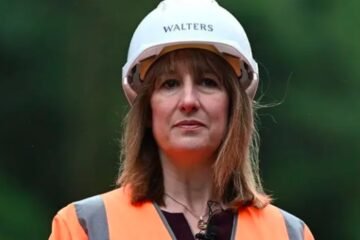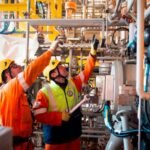PARIS – Scotland’s LoganAir is taking a bold step toward decarbonising regional aviation, announcing this week a landmark partnership with hydrogen-electric engine developer ZeroAvia. The airline, best known for servicing remote Scottish islands and underserved regional routes, signed a memorandum of understanding (MOU) to explore the potential adoption of ZeroAvia’s cutting-edge hydrogen-electric propulsion systems.
The announcement was made during the Paris Air Show on Tuesday, further cementing the show’s growing focus on sustainable aviation technologies.
Flying into the Future
Under the agreement, LoganAir and ZeroAvia will collaborate on assessing the feasibility of installing hydrogen-electric engines on LoganAir’s fleet of De Havilland Twin Otters and ATR 42/72 turboprops. The move could place the Glasgow-based carrier at the forefront of the global shift to zero-emissions flight.
“This MOU is about future-proofing our operations,” said a LoganAir spokesperson. “We’re a regional carrier with a strong commitment to environmental responsibility. Hydrogen-electric technology may be the leap we need.”
LoganAir’s interest centres on ZeroAvia’s two flagship engines:
-
ZA600 (600kW): Suited for 10–20 seat aircraft, including the Cessna Caravan and BN-2 Islander.
-
ZA2000 (2–5MW): Designed for 40–80 seat aircraft like the ATR 72 and Dash 8.
The ZA600 is already undergoing flight testing, while the ZA2000 remains in development, with certification targeted within the next few years through the UK Civil Aviation Authority (CAA).

Hydrogen Propulsion: The New Green Standard?
Hydrogen-electric powertrains work by combining hydrogen fuel cells with electric propulsion, emitting only water vapour and producing near-zero carbon emissions. For a regional carrier like LoganAir—whose routes frequently serve sensitive rural environments and short-haul corridors—the benefits could be transformative:
-
Lower carbon footprint
-
Reduced noise pollution
-
Potential fuel cost savings in the long term
ZeroAvia’s aircraft retrofit approach allows airlines to decarbonise without having to invest in an entirely new fleet. Instead, older engines can be swapped out for hydrogen-electric systems—a key draw for carriers like LoganAir, which operates over 20 ATR turboprops and 3 Twin Otters, many of which fly short island-hopping routes ideal for early adoption.
ZeroAvia’s Growing Momentum
For ZeroAvia, the LoganAir announcement adds to a growing list of aviation partnerships. The company recently confirmed its first commercial sale to Jetcruzer International and has racked up more than 2,000 preorders, including a conditional purchase agreement from United Airlines for up to 100 engines.
The startup has facilities in both the UK and the US and is working closely with regulators to certify its propulsion systems for commercial use. In the UK, the CAA is evaluating ZeroAvia’s technologies as part of a broader green aviation push, with substantial government support.
LoganAir now joins the likes of RVL Aviation—ZeroAvia’s expected launch customer—as a potential early adopter, underscoring confidence in the scalability of hydrogen power.
Strategic Fit for Scotland
For LoganAir, the partnership aligns with broader Scottish and UK sustainability goals. The airline, which serves some of Europe’s shortest commercial flights—including the famously brief Westray to Papa Westray hop (under two minutes)—has long been seen as a logical candidate for green aviation pilots.
Scotland’s commitment to achieving net-zero emissions by 2045 has prompted investments across rail, ferry, and aviation sectors. This includes government support for hydrogen hubs, particularly in the Highlands and Islands where wind and tidal power could be used to generate green hydrogen locally.
LoganAir’s regional network provides the perfect testing ground for early hydrogen-powered flights—short hops, limited cargo, and regular service patterns.
Challenges Ahead
While the promise of hydrogen-electric flight is immense, significant hurdles remain:
-
Hydrogen infrastructure: Airports must be equipped to store and supply liquid or gaseous hydrogen safely.
-
Certification: Both the ZA600 and ZA2000 must pass rigorous safety and reliability checks.
-
Fleet integration: Retrofit programmes require grounding aircraft and pilot retraining.
Still, industry experts suggest that regional carriers like LoganAir—small enough to be agile, yet large enough to make a commercial impact—are the ideal proving ground.
The Broader Picture
LoganAir’s hydrogen ambitions echo a global movement in aviation:
-
Universal Hydrogen is working with Connect Airlines in North America.
-
Airbus plans to launch its own hydrogen aircraft family by the mid-2030s.
-
Heart Aerospace and Wright Electric are exploring electric and hybrid-electric platforms for regional markets.
As ZeroAvia inches closer to commercial readiness, Scotland’s skies could soon become a proving ground for one of the aviation sector’s most radical transformations in decades.


















